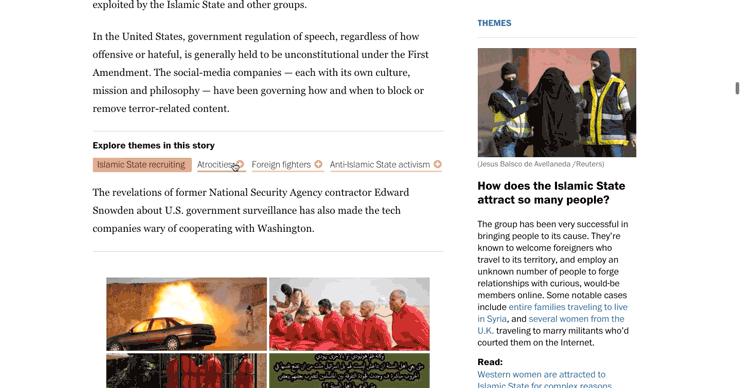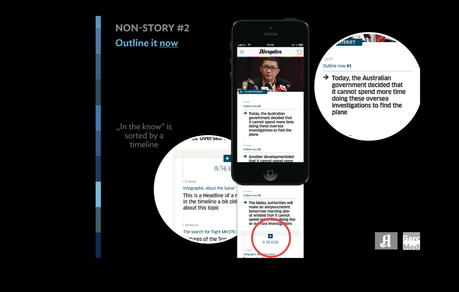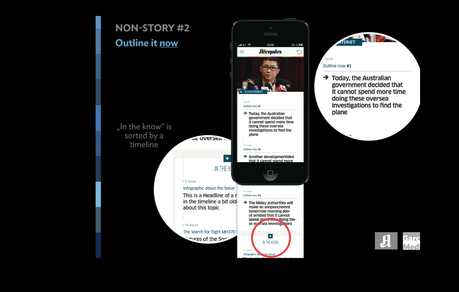

When I first read about The Washington Post's experiment to test a new “Knowledge Map” feature which surfaces annotations for readers adding background to stories, I could not help but think at work we have done with the team of Norway's Aftenposten as we presented the editors with various ways of creating special story segments for mobile.
However, the more I read about what The Post's strategy is, the more I realize, that, while similar in goals ---to amplify information for the reader---The Post's is a more complete and ambitious tool.
Here is how it works: The technology integrates highlighted text within an article and, when clicked, loads up additional information about the subject on the right side. In essence, it is a sort of "sidebar" if we wish to use the more traditional term for such treatments, which became popular with printed newspapers in the post USA Today era of the 80s.
Why these storytelling strategies are important


Aftenposten of Norway: prototype shows the In The Know section, offering context and background for stories above it
Readers no doubt will benefit from what The Post is experimenting with. It goes with our belief that while we move between the two tempos for news consumption ---lean forward, lean back--, we crave more than knowing what just happened. In addition, and usually a few minutes after we get the first news, we want to know more, and we may pause between meetings for that part of the story. We may come back hours later for another taste of it.
It was based on that idea that we toyed with the concept for Aftenposten, where a series of story templates were created for presenting certain breaking news stories on mobile. But, let's say that there is a recurring story that we are covering continously during the course of a day, we would then add the In The Know section just below the story, to amplify, to offer background and to update readers who may not have been aware of the story at all.
What all of this tells us is that journalists require special skills to do the two-tempo style of storytelling well.
Yet, the more that our audiences move to mobile platforms, the more essential that these strategies become. We are only light years away from the day when the way we present stories for mobile will be dramatically different from how those same stories appear on other platforms.
The Washington Post is leading the way.

